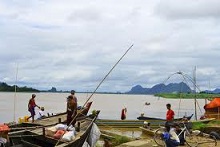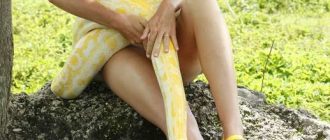Visiting Moulmein, Burma in the near future? Read on for travel tips pertaining to the Burmese city of Moulmein…
Moulmein is the third largest city of Burma and is situated 300 km away from Yangon and about 70 km from Thaton. Moulmein Burma is near the mouth of the Thanlwin, also called Salween, River.
Population
Moulmein has a population of 300,000 people and is the capital of the Mon State. It is also the largest city of Mon. Earlier, during the colonial era, Moulmein had a considerably large Anglo-Burmese population, to the extent were an area of the city was called little England. However, with the end of the colonization, the population of Anglo-Burmese also shifted out to the UK or Australia. These families were involved in running rubber plantations.
General Information
The city’s name came from an old myth. The myth states that a Mon king lost his eye in Moulmein, which roughly means ruined eye. Moulmein is also the only seaport and main trading center of south eastern Burma. The biggest landmark of the region is the Thanlwin Bridge, which is one of Burma’s longest roads, as well as a rail bridge. The bridge is over 11,000 feet in length and connects Burma’s south eastern region with Yangon.
Where Can You Go from Here
Moulmein Burma is connected to Pa-an in the Kayin State besides being connected to Dawei and Myeik, which are a part of the Tanintharyi Division, by road. Previously, you could only take the ferry to Yangon but now after the construction of the Thalwin Bridge, you can take the train. If trains are not your thing, you can avail the regular flight leaving from the Moulmein Burma airport for Yangon.
Food in Moulmein
The city is famous for the wide variety of tropical fruits available here and is also famous for its unique food. Moulmein has earned many famous Burmese expressions, owing to its exceptional food. In Moulmein, people typically eat rice with a curry for lunch and dinner. The curries in Moulmein Burma can have chicken, pork, fish or prawns in it. Normal appetizers include a salad, such as the tea leaves salad or some fried vegetables.
Industry
Moulmein has many sawmills and as the staple food of Burma is rice, it also has many rice mills. Teak and rice is transported to Moulmein, using the river. In the yesteryears, Moulmein was a bustling ship building industry, but now it just retains its place as an important port. Moulmein is also equipped with a solar plant, which extracts the salt from the sea water, making it drinkable.
Culture
As Moulmein is a seaport, it houses many cultures under one roof. However, there is a clear Buddhist majority. In addition there are Christians, who came to Moulmein as a result of the British annexation in the 19th century. The 20th century also saw the influx of Hindus into Moulmein, owing to the expansion of trade and business. Other religions found in Moulmein include, Islam and different religions brought along with them elements of their own culture .
However, if you travel to a traditional village in Moulmein, you will always find a monastery and monks. Boys and girls both have coming of age ceremonies. Boys visit monasteries for brief time periods while girls have ear piercing ceremonies to mark their coming of age. Superstition is very common in Moulmein and ghosts are also firmly believed in.





